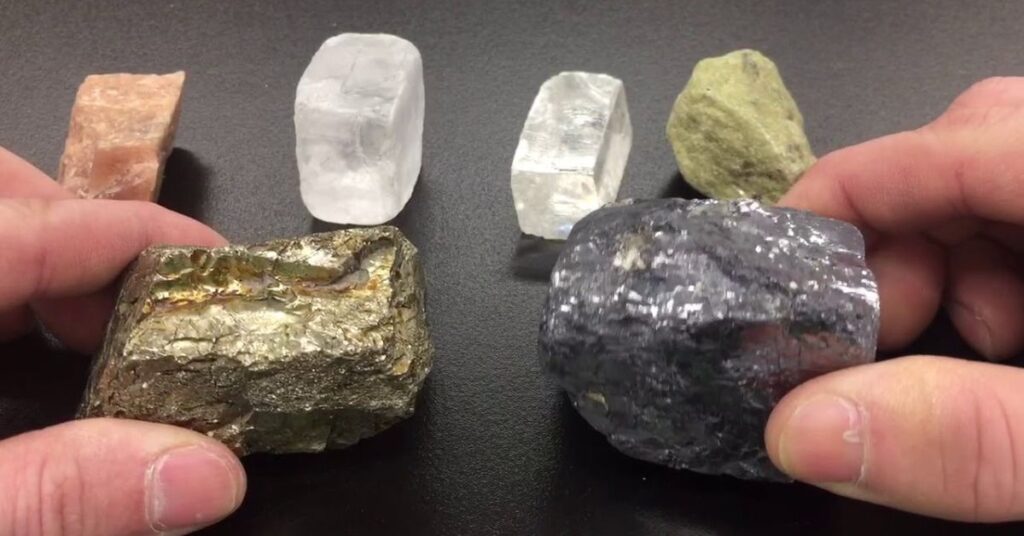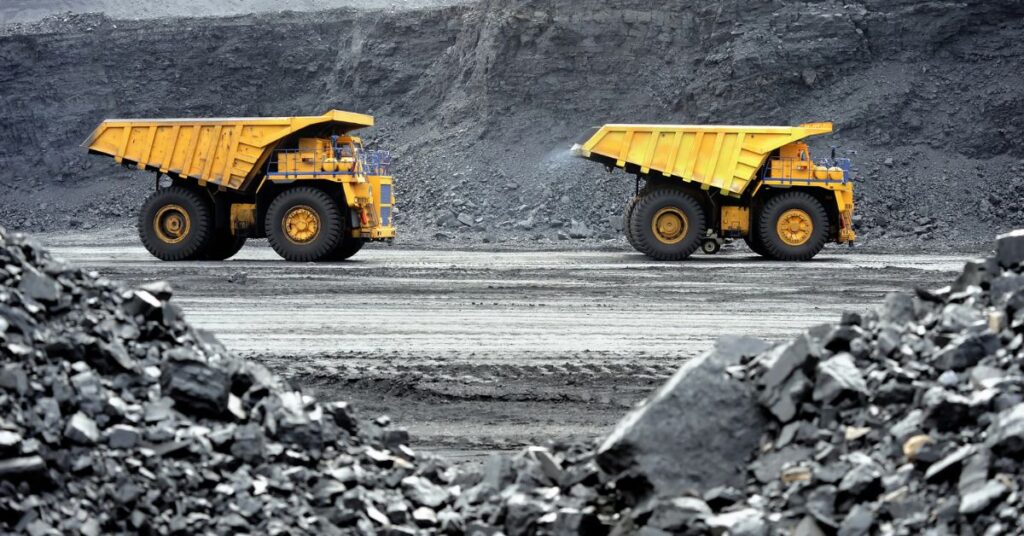Mining and quarrying of nonmetallic minerals, excluding fuels, offers promising career opportunities.
These industries extract essential materials like sand, gravel, limestone, and gypsum, which are crucial for construction, agriculture, and manufacturing. With a steady demand for these minerals, individuals entering this field can expect stable job security and potential for career advancement.
Moreover, careers in nonmetallic mining and quarrying often come with competitive salaries and comprehensive benefits packages. Despite the physical demands and non-traditional work schedules associated with these industries, individuals can find fulfillment in contributing to infrastructure development and playing a vital role in providing materials essential for various industries.
The Essence of Quarrying Nonmetallic Minerals

- Quarrying nonmetallic minerals involves extracting essential materials from the earth’s surface.
- These minerals are crucial for industries such as construction, agriculture, and manufacturing.
- Quarrying activities include digging, blasting, and crushing rocks to obtain substances like sand, gravel, limestone, clay, and gypsum.
- Nonmetallic minerals serve as foundational elements in modern infrastructure, including roads, bridges, and buildings.
- Quarrying contributes to economic growth by facilitating transportation, trade, and agricultural productivity.
- Responsible extraction practices and reclamation efforts are essential for environmental sustainability.
- Quarrying balances industry needs with environmental stewardship to ensure the availability of critical materials while preserving natural ecosystems.
Definition and Explanation of Quarrying

Quarrying is the methodical extraction of natural resources such as minerals, rocks, and stones from the earth’s surface. It involves a series of activities including digging, blasting, and crushing rocks to obtain substances essential for various industries.
These extracted materials serve as fundamental elements in the development of infrastructure, including roads, bridges, buildings, and more. However, the practice of quarrying requires careful planning, adherence to safety regulations, and consideration of environmental impacts.
Responsible management of quarrying activities involves implementing measures to minimize environmental damage, such as reclamation efforts aimed at restoring landscapes to their natural state.
Types of Nonmetallic Minerals Mined
Here are the types of nonmetallic minerals commonly mined:
Sand and Gravel
- Widely used in construction for making concrete, mortar, and asphalt.
- Also used in landscaping and road construction.
Limestone
- A versatile mineral used in construction materials such as cement, concrete, and asphalt.
- Utilized in agriculture to neutralize soil acidity.
Clay
- Used in the production of ceramics, pottery, bricks, tiles, and various industrial applications like drilling mud and cat litter.
Dimension Stone
- Natural stones such as granite, marble, and slate are quarried for use in countertops, flooring, monuments, and decorative purposes.
Gypsum:
- Primarily used in the production of drywall, plaster, and fertilizers.
- Also applied in various industrial applications and soil improvement.
The Mining Industry: An Overview
One of the defining features of the mining industry is its diversity, encompassing a vast array of minerals and substances. These include metals like gold, silver, copper, and iron ore, as well as nonmetallic minerals like coal, limestone, gypsum, and phosphate.
Overall, the mining industry is essential for supplying raw materials needed for various products and processes, ranging from electronics and infrastructure to agriculture and transportation. Its significance in driving economic activity and meeting the demands of modern society underscores the importance of sustainable mining practices and responsible resource management.
Mining Techniques for Nonmetallic Minerals
Mining techniques for nonmetallic minerals vary depending on the type of mineral and its location. Here are some common methods used:

Open-Pit Mining
- This method is typically employed for surface deposits such as sand, gravel, and limestone.
- Involves removing layers of soil and rock to access the mineral deposit.
- Heavy machinery such as excavators and bulldozers are used to extract the minerals efficiently.
- Open-pit mining is cost-effective and allows for the extraction of large quantities of minerals.
Underground Mining
- Used for minerals located below the earth’s surface, such as gypsum and phosphate.
- Involves creating shafts and tunnels to access the mineral deposit.
- Miners extract the material manually or using equipment like drills and explosives.
- Underground mining requires specialized equipment and safety measures to ensure worker safety and mine integrity.
Dredging
- Commonly used for mining sand and gravel deposits found underwater, such as in rivers and lakes.
- Involves using dredges to remove sediment from the bottom of water bodies.
- The extracted material is then processed on-site or transported to processing facilities.
Quarrying
- Specifically used for extracting dimension stones, such as granite and marble, from quarries.
- Involves drilling, blasting, and cutting the stone from the quarry walls.
- The stone is then processed into various products like countertops, flooring, and monuments.
Environmental Impact of Quarrying and Mining

Quarrying and mining activities can have significant environmental impacts, which need to be carefully managed. Some of the key environmental impacts include:
Habitat Destruction
Quarrying and mining operations often involve clearing large areas of land, leading to habitat destruction and fragmentation. This can result in the loss of biodiversity and disruption of ecosystems, impacting wildlife populations and their habitats.
Soil Erosion
The removal of vegetation and topsoil during quarrying and mining can lead to soil erosion, especially in areas with steep slopes or fragile soil structures. Soil erosion can degrade land quality, reduce fertility, and increase the risk of landslides and sedimentation in nearby water bodies.
Water Pollution
Quarrying and mining activities can contaminate water sources through the release of pollutants such as sediment, heavy metals, and chemicals. This pollution can degrade water quality, harm aquatic ecosystems, and pose risks to human health through drinking water contamination.
Air Pollution
Dust and particulate matter generated during quarrying and mining operations can contribute to air pollution, especially in areas with high levels of activity. This can have adverse effects on air quality, respiratory health, and visibility in surrounding communities.
Noise Pollution
Quarrying and mining activities can produce noise from machinery, blasting, and transportation, which can disturb wildlife and nearby communities. Prolonged exposure to high levels of noise pollution can have detrimental effects on human health and well-being.
Exploring A Career Path in Quarrying
Exploring a career path in quarrying offers individuals the opportunity to work in a dynamic and essential industry that supplies materials crucial for construction, infrastructure development, and manufacturing. Here are some key aspects to consider:
Diverse Job Opportunities
Quarrying encompasses a wide range of roles, catering to various skill sets and interests. From equipment operators and geologists to environmental specialists and production supervisors, there are diverse career paths available in the industry.
Job Stability and Growth
With a steady demand for construction materials, quarrying offers job stability and opportunities for career advancement. As populations grow and infrastructure projects expand, the need for materials extracted from quarries continues to rise.
Competitive Salaries and Benefits
Careers in quarrying often come with competitive salaries and comprehensive benefit packages, including healthcare, retirement plans, and paid time off. This makes it an attractive option for individuals seeking financial stability and long-term prospects.
Contribution to Infrastructure Development
Working in quarrying allows individuals to play a vital role in supplying materials needed to build roads, bridges, buildings, and other essential infrastructure. This sense of contribution to the community can be personally fulfilling for many professionals.
Environmental Stewardship
Quarrying companies are increasingly focused on implementing sustainable practices and minimizing environmental impact. Individuals entering the field have the opportunity to contribute to these efforts through responsible extraction practices and environmental management.
Skills Development and Training
Quarrying companies often provide training and development opportunities for employees to enhance their skills and advance their careers. Whether it’s learning how to operate heavy machinery or gaining expertise in environmental regulations, there are opportunities for professional growth within the industry.
Job Roles in the Quarrying Industry
Job roles in the quarrying industry encompass a wide range of positions, each playing a crucial role in the extraction and management of materials. Here are some common job roles:
Equipment Operators: Responsible for operating heavy machinery such as excavators, loaders, and dump trucks to extract and transport materials from the quarry.
Geologists: Assess mineral deposits and geological formations to determine the quality and quantity of materials available. They also play a key role in planning extraction methods and identifying new quarry sites.
Environmental Specialists: Monitor and manage the environmental impact of quarrying operations. They ensure compliance with regulations, implement mitigation measures, and oversee reclamation efforts to restore mined areas.
Production Supervisors: Oversee daily mining activities, including scheduling, equipment maintenance, and quality control. They ensure that production targets are met safely and efficiently.
Maintenance Mechanics: Maintain and repair quarrying equipment to ensure optimal performance and safety. They troubleshoot mechanical issues and perform routine maintenance tasks to minimize downtime.
Dispatchers: Coordinate logistics and equipment movement within the quarry, ensuring the smooth flow of operations. They schedule deliveries, manage inventory, and communicate with equipment operators to optimize efficiency.
Truck Drivers: Transport extracted materials from the quarry to processing facilities or construction sites. They operate specialized trucks and adhere to safety regulations while transporting heavy loads.
Safety Officers: Ensure compliance with safety regulations and promote a culture of safety within the quarry. They conduct safety inspections, provide training, and investigate accidents to prevent injuries and ensure a safe work environment.
Required Skills and Qualifications in Quarrying
Equipment Operation
Proficiency in operating heavy machinery such as excavators, loaders, and dump trucks.
Geological Knowledge
Understanding of mineral deposits, geological formations, and surveying techniques.
Environmental Awareness
Knowledge of environmental regulations, mitigation measures, and reclamation practices.
Safety Protocols
Strict adherence to safety protocols and procedures to ensure a safe working environment.
Mechanical Skills
Ability to troubleshoot mechanical issues and perform routine maintenance on quarrying equipment.
Communication Skills
Effective communication with team members, supervisors, and external stakeholders.
Problem-Solving Abilities
Capacity to identify and solve problems related to quarrying operations and equipment.
Physical Fitness
Strength, stamina, and agility to perform physically demanding tasks in challenging environments.
Attention to Detail
Precision and attention to detail in tasks such as surveying, equipment operation, and quality control.
Education and Training
Relevant education or training in quarrying, geology, environmental science, or a related field.
Licenses and Certifications
Possession of required licenses, certifications, or permits for operating heavy machinery and ensuring compliance with regulations.
Understanding the Pros and Cons of Quarrying
Understanding the pros and cons of quarrying is essential for evaluating its impact on communities and the environment. On the positive side, quarrying provides vital raw materials for construction and infrastructure development, supporting economic growth and job creation.
Also, quarrying operations contribute to technological advancements in extraction techniques and supply materials for essential infrastructure projects like roads and bridges. However, quarrying also has significant drawbacks. It can lead to habitat destruction, soil erosion, and pollution of air and water resources, impacting both wildlife and nearby communities.
Safety hazards associated with working with heavy machinery and explosives further underscore the need for careful consideration and regulation of quarrying activities. Ultimately, striking a balance between the benefits and drawbacks of quarrying is crucial for sustainable resource management and minimizing environmental impact.
Mining Your Potential – Identifying Career Opportunities

Mining offers a plethora of career opportunities for individuals with diverse skill sets and interests. Here are some key aspects to consider when identifying career opportunities in the mining industry:
Exploring Career Paths
Whether you’re passionate about engineering, geology, environmental science, or logistics, there’s a role for you in the mining industry. From entry-level positions to specialized roles requiring advanced degrees, mining companies seek individuals with a range of skills and knowledge.
Navigating the Industry
With advancements in technology and a growing emphasis on sustainability, the mining industry is evolving rapidly. Staying informed about the latest trends, technologies, and regulations shaping the sector is crucial for navigating career opportunities effectively.
Seizing Opportunities
Whether you’re drawn to the excitement of exploration, the challenge of problem-solving, or the opportunity to make a positive impact on communities and the environment, mining offers a dynamic and rewarding career journey. Embrace the diversity of opportunities available and seize the chance to forge a successful and fulfilling career in the ever-evolving world of mining.
Conclusion
In conclusion, embarking on a career in the mining and quarrying of nonmetallic minerals (excluding fuels) presents a compelling opportunity for individuals seeking stability, growth, and diverse job prospects.
With a steady demand for construction materials and essential minerals, this industry offers competitive salaries, comprehensive benefits, and the satisfaction of contributing to infrastructure development. However, it’s crucial to acknowledge the physical demands, safety concerns, and environmental impacts associated with mining and quarrying activities.
By prioritizing safety, environmental stewardship, and ongoing skills development, individuals can navigate the challenges and reap the rewards of a fulfilling career in this vital sector. Ultimately, whether it’s operating heavy machinery, conducting geological surveys, or implementing sustainable practices, a career in mining and quarrying offers the chance to make a tangible impact while pursuing personal and professional growth.
Read As: Can a Landlord Prevent You from Having Overnight Guests?
Frequently asked question
What makes mining and quarrying of nonmetallic minerals a viable career choice?
Steady demand for construction materials ensures stable job opportunities with competitive salaries.
What are the potential rewards of a career in this field?
Competitive salaries, diverse job opportunities, and the satisfaction of contributing to essential industries like construction and manufacturing.
What are some challenges associated with careers in mining and quarrying?
Physical demands, safety concerns, and the need to adhere to environmental regulations are notable challenges.
Are there opportunities for advancement in this industry?
Yes, with additional training and certifications, individuals can advance to supervisory roles or transition into related fields like geoscience or engineering.
What skills are essential for success in mining and quarrying careers?
Technical skills for operating heavy machinery, physical fitness, safety awareness, and knowledge of environmental regulations are crucial.
Is mining and quarrying a safe career choice?
While it can be safe with proper training and adherence to safety protocols, it involves inherent risks associated with working with heavy machinery and handling explosives.
How do mining and quarrying contribute to the economy?
It provides essential raw materials for construction, infrastructure development, and manufacturing, contributing to economic growth and job creation.
What role does environmental stewardship play in mining and quarrying careers?
Responsible extraction practices and adherence to environmental regulations are increasingly important to minimize environmental impact and promote sustainable resource management.

James, with 5 years of business experience, brings expertise to our website. His profile reflects a commitment to excellence and innovation in his field.







